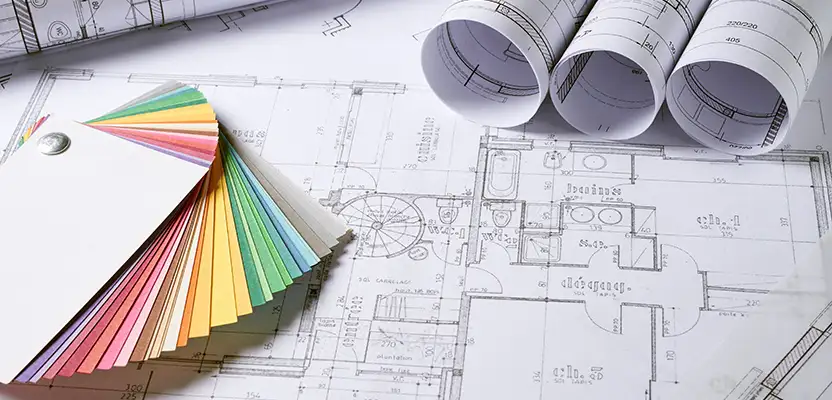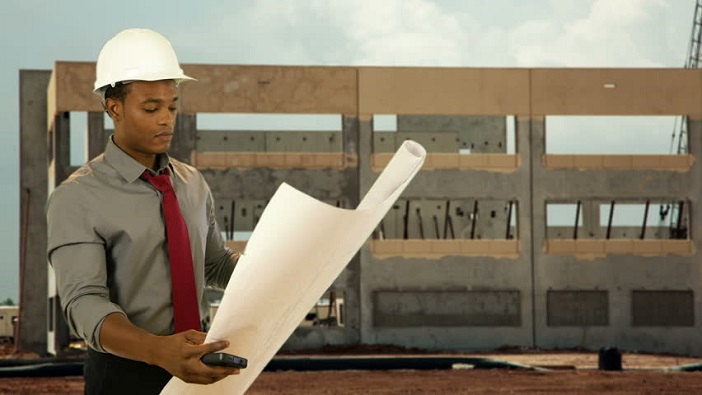Recognizing the Diverse Profession Paths Available for Aspiring Architect
As an aspiring Architect, you have a world of profession paths waiting for you. Whether you're attracted to standard architecture or the nuances of lasting style, there's a specific niche that straightens with your interests.
Standard Design: Designing Frameworks and buildings
Conventional design focuses on making buildings and frameworks that mix performance with aesthetic allure. As you explore this area, you'll value the complex balance between form and function. You'll discover to draw motivation from historic styles, including aspects like symmetry, products, and workmanship. Your layouts can reflect cultural heritage, showcasing regional traditions while satisfying contemporary requirements.
You'll develop skills in preparing, model-making, and website analysis, allowing you to imagine and interact your ideas properly. Involving with customers, you'll need to recognize their vision and translate it right into possible designs.
In addition, developing codes and sustainability techniques are essential in your job, guaranteeing your frameworks are secure and eco-friendly. As you grow in your occupation, you'll locate chances in property, industrial, or perhaps remediation projects, each offering special difficulties. Embracing conventional architecture leads the way for a fulfilling job that admires the past while shaping the future.
Urban Preparation: Forming Neighborhoods and Public Spaces
As an ambitious Architect, you can play a necessary duty as an urban planner, transforming just how neighborhoods function and communicate. By employing area interaction strategies, you'll assure that residents have a voice fit their setting. And also, integrating sustainable style concepts will help develop areas that not just fulfill today's demands however additionally protect the future.
Duty of Urban Planners
While numerous might assume of engineers as the single visionaries behind buildings, city planners play an essential function fit the wider landscape of areas and public areas. They examine land use, zoning legislations, and community needs to develop sustainable atmospheres that enhance lifestyle. By collaborating with different stakeholders, you'll help create parks, transport systems, and suburbs that promote social interaction and access. Urban organizers likewise focus on environmental factors to consider, ensuring that growths incorporate green areas and support biodiversity. Your experience in spatial layout and area characteristics enables you to envision future growth while preserving social heritage. In this crucial function, you'll directly influence exactly how people experience their environments, making every job an opportunity for favorable adjustment.
Neighborhood Engagement Approaches
Effective area involvement strategies are important for city planners to guarantee that the voices of citizens are listened to and valued in the preparation process. To cultivate purposeful discussion, you should prioritize open online forums and workshops where neighborhood members can express their ideas and issues. By proactively paying attention and including responses, you'll create spaces that reflect the community's needs, eventually leading to even more effective and sustainable urban atmospheres.
Sustainable Design Principles
When designing urban areas, incorporating lasting layout concepts is crucial for producing atmospheres that flourish both ecologically and socially. You should begin by concentrating on energy performance, utilizing products that reduce waste and advertise recycling. Think about integrating green spaces, like parks and yards, to boost biodiversity and enhance air high quality. Promoting walkability and public transport can minimize dependence on autos, cultivating a healthier community.
Creating with water preservation in mind is additionally crucial-- think concerning rain gardens and permeable surface areas to manage stormwater. Entailing community participants during the preparation process warranties that the areas you create fulfill their requirements and urge social interaction. By welcoming these principles, you'll add to lively, sustainable metropolitan landscapes that profit everyone.

Landscape Style: Producing Sustainable Outdoor Settings
As you discover landscape architecture, you'll uncover crucial design principles that create useful and lovely outside spaces. Lasting practices play a vital function in ensuring these environments grow while decreasing environmental influence. Plus, you'll locate a range of career chances that allow you to make a genuine distinction in just how individuals communicate with nature.
Layout Principles in Landscape
Recognizing design principles in landscape architecture is important for producing sustainable exterior atmospheres that harmonize with nature. You'll require to ponder components like equilibrium, proportion, and scale to ensure your styles feel cohesive and welcoming. In addition, pay focus to seasonal changes, designing with products that match the environments year-round.
Sustainable Practices Summary
Sustainable methods in landscape style not just concentrate on appearances however likewise focus on environmental wellness and resource conservation. You can create rooms that advertise dirt health, such as practicing and making use of natural materials permaculture principles. Ultimately, these methods assure your designs benefit both people and the atmosphere for years to come.
Occupation Opportunities Expedition
With a why not try these out solid foundation in sustainable practices, landscape architecture provides a selection of profession courses that enable you to make a purposeful effect on the setting. You could work as a landscape designer, producing visually pleasing and practical outside rooms, or specialize in environmental restoration, helping to revive broken communities. Urban coordinators typically work together with landscape designers to develop environment-friendly rooms in city settings, improving city livability. If you're passionate about education, take into consideration coming to be a landscape style teacher, inspiring future generations. Furthermore, you may collaborate with nonprofits concentrated on ecological sustainability or participate in research study to introduce new practices. Each course not only shapes lovely atmospheres but additionally promotes a healthier earth for future generations.
Sustainable Layout: Concentrating On Eco-Friendly Practices
As you discover your job in style, embracing environmentally friendly techniques can establish you apart in a competitive area. Sustainable style concentrates on producing buildings that lessen environmental impact while improving owner wellness. By integrating renewable materials, energy-efficient systems, and sustainable structure techniques, you'll add to a greener future.
Beginning by obtaining understanding of environment-friendly accreditations like LEED or BREEAM, which can boost your qualifications. Consider exactly how all-natural light, ventilation, and thermal effectiveness can maximize design. Collaborate with designers and ecological consultants to introduce services that minimize waste and conserve resources.
Do not neglect the importance of community involvement-- interesting local stakeholders can inspire styles that balance with the atmosphere. As customers increasingly prioritize sustainability, your proficiency in eco-friendly practices will not only bring in tasks yet additionally fulfill your passion for accountable style. Welcome this critical facet of the career, and enjoy your career grow.
Historic Preservation: Safeguarding and Restoring Cultural Heritage
While you begin on your building journey, consider the important role of historical preservation in maintaining our social heritage. This field concentrates on the security and remediation of substantial structures, sites, and structures that inform the stories of our past. By taking part in historic preservation, you'll aid guard the building legacy that shapes community identification.
As a historic conservation Architect, you'll analyze historic relevance and analyze the condition of frameworks. You'll work very closely with preservationists and historians to ensure authentic remediation strategies are utilized. This job path permits you to blend creative thinking with research study, enabling you our website to develop solutions that appreciate initial materials and workmanship.
Your job not only adds to sustainability by reusing existing buildings but likewise cultivates a sense of satisfaction within areas. Embracing this path will assist you come to be a guardian of background, preserving the tales and looks that enrich our lives.
Interior Design: Enhancing Indoor Spaces
Historic preservation and indoor design both share a commitment to enhancing the built atmosphere, yet they concentrate on various facets. While historical conservation stresses maintaining a structure's historic and social worth, interior design nos in on maximizing interior spaces for functionality and aesthetic appeals.
As an aspiring Architect, you'll discover that indoor architecture permits you to blend imagination with technological abilities. You'll develop areas that not only look great however additionally advertise convenience and performance. This field includes comprehending exactly how light, shade, and products engage within an area, affecting mood and functionality.
You'll function on numerous tasks, from household homes to industrial offices, guaranteeing that each atmosphere fulfills the demands of its owners. By focusing on individual experience, you can transform interiors right into practical and motivating areas, making a considerable effect on how people engage with their environments. Accept the chance to enhance interior settings and form the means individuals work and live.
Industrial Design: Combining Performance With Looks
Industrial design plays an important role in developing items that seamlessly blend appearances with capability, guaranteeing that what you use day-to-day is not only aesthetically attractive but additionally useful. As an aspiring Architect, you could engage yourself in this area, concentrating on making whatever from furniture to customer electronics. Your click this job entails recognizing user demands, materials, and making processes, permitting you to create cutting-edge options that enhance daily experiences.
In industrial design, you'll frequently collaborate with online marketers, producers, and engineers, ensuring that your layouts are not just beautiful but additionally viable. This occupation path provides a vibrant atmosphere where creativity meets usefulness, making it a fulfilling option for architects interested in forming the items of tomorrow.
Often Asked Questions
What Educational Certifications Do I Required to Become an Architect?
To become an engineer, you'll need a professional level in design, generally a Bachelor's or Master's. Additionally, you'll need to finish an internship and pass the Architect Registration Evaluation to practice legitimately.
Are There Qualification Demands for Different Building Job Paths?
Yes, there're qualification requirements for numerous architectural courses. Architect. You'll need to pass exams, full internships, and occasionally seek specialized training, relying on your picked emphasis, like landscape architecture, city layout, or historical conservation
What Software Application Abilities Are Necessary for Architects Today?

Exactly How Can I Gain Practical Experience While Studying Design?
You can gain sensible experience by interning at architectural companies, joining style competitors, volunteering for area projects, or working together with classmates on real-world jobs. These chances improve your skills and build valuable links in the sector.
What Task Opportunities Exist Outdoors Conventional Style Firms?
You can explore different task possibilities outside conventional style firms, like metropolitan preparation, interior decoration, landscape style, construction administration, realty advancement, or perhaps roles in sustainability consulting. Each deals unique challenges and benefits.
Whether you're attracted to typical style or the nuances of sustainable design, there's a niche that lines up with your passions.When designing urban areas, integrating lasting layout concepts is vital for developing environments that flourish both environmentally and socially.As you check out landscape design, you'll find crucial design principles that create practical and lovely exterior rooms.Recognizing layout concepts in landscape style is vital for producing lasting outside atmospheres that balance with nature.In commercial layout, you'll often collaborate with engineers, suppliers, and marketers, guaranteeing that your designs are not only gorgeous but also viable.